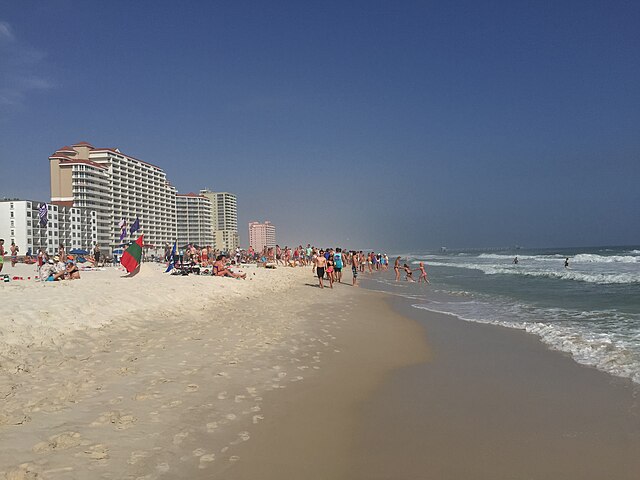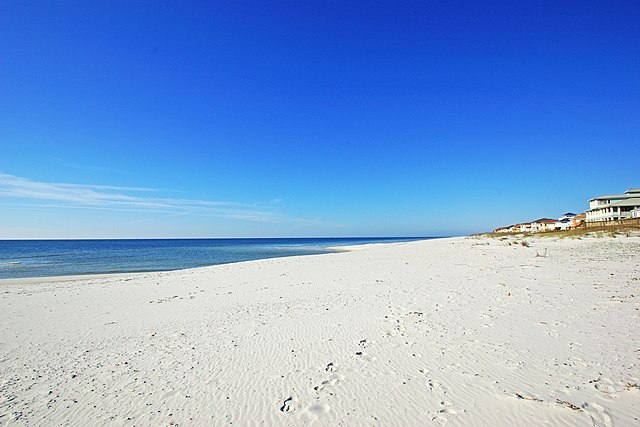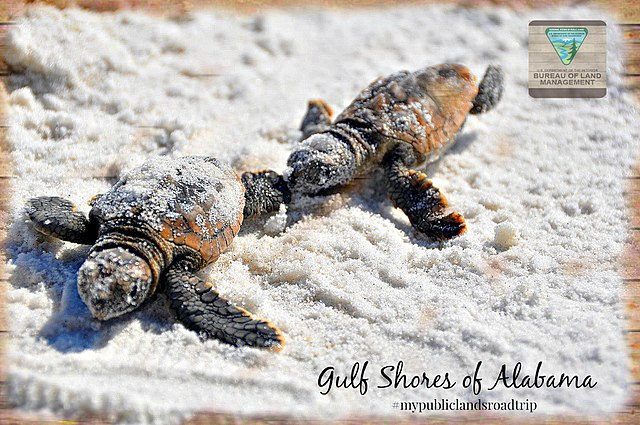Planning a trip to Gulf Shores, Alabama? You’re in for a treat with its sugar-white beaches and warm Gulf breezes, but the weather can make or break your coastal adventure. Whether you’re dreaming of a sunny summer escape or a cozy winter retreat, understanding Gulf Shores’ weather patterns is key to packing smart and planning activities. From balmy summers to mild winters, let’s dive into what you can expect year-round, with insider tips to make your trip unforgettable. Ready to explore the forecast? Let’s get started!
Why Gulf Shores Weather Matters for Your Trip
Imagine arriving at Gulf Shores with flip-flops in hand, only to be greeted by a surprise thunderstorm. The weather here isn’t just a backdrop—it shapes your entire experience. From beach days to fishing trips, knowing what Mother Nature has in store helps you plan like a pro. Gulf Shores sits in a subtropical zone, which means warm temperatures most of the year, but with a side of humidity and occasional storms. So, why does this matter? Because a little prep can turn a good vacation into a great one!
A Subtropical Paradise: What to Expect
Gulf Shores enjoys a subtropical climate, meaning long, hot summers and short, mild winters. Temperatures typically range from the mid-40s in January to the high 80s in July. But don’t let those numbers fool you—humidity can make it feel like you’re walking through a warm, wet blanket in summer. Rainfall is common, especially in the afternoons, and hurricanes are a possibility from June to November. Sounds intense, right? Don’t worry, we’ll break it down season by season.
Seasonal Weather Breakdown in Gulf Shores

Each season in Gulf Shores has its own vibe, like chapters in a beach novel. Whether you’re chasing sunshine or cooler breezes, here’s what you’ll find throughout the year.
Spring: A Sweet Spot for Beach Lovers
Spring (March to May) is like Gulf Shores’ warm-up act. Temperatures climb from the low 60s to the mid-70s, with water temperatures inching up to a swimmable 70°F by May. It’s less humid than summer, and afternoon showers are brief, like a quick rinse before hitting the beach again. Spring breakers flock here in March, but April and May offer quieter shores with blooming wildflowers. Pack light layers for cool evenings and sunscreen for those sunny days!
Top Spring Activities
Spring is perfect for outdoor adventures. Try kayaking in the back bays, hiking in Gulf State Park, or joining a dolphin-watching tour. The Hangout Music Festival in May cranks up the fun, but book early—hotels fill up fast!
Summer: Hot, Humid, and High-Energy
Summer (June to August) is Gulf Shores’ main event. Expect highs in the upper 80s to low 90s, with water temperatures hitting a balmy 84°F. It’s peak beach season, so the shores buzz with families building sandcastles and surfers catching waves. But here’s the catch: humidity is intense, and afternoon thunderstorms pop up like uninvited guests. Pack breathable clothes, a rain poncho, and plenty of sunscreen. Pro tip: hit the beach early to beat the heat!
Summer Storm Prep
Thunderstorms are common, especially in the late afternoon. Keep an eye on the sky and have a backup plan, like visiting the Alabama Gulf Coast Zoo or grabbing shrimp tacos at a local spot. If you’re on the beach, head indoors when you hear thunder—safety first!
Fall: Cooler Breezes and Fewer Crowds

Fall (September to November) is Gulf Shores’ best-kept secret. Temperatures drop to the mid-80s in September and cool to the 70s by November. The water stays warm enough for swimming (around 74°F in October), and humidity eases up. It’s ideal for fishing, biking, or strolling the beach without melting. Plus, events like the National Shrimp Festival in October add flavor to your trip. Just watch for hurricane risks, especially early in the season.
Fall Events to Catch
Fall is festival season! The Shrimp Festival is a foodie’s dream, with fresh seafood and live music. November brings the Oyster Cook-Off, perfect for culinary adventurers. Book accommodations early to snag a spot near the action.
Winter: Mild and Quiet
Winter (December to February) in Gulf Shores is like a cozy beach retreat. Highs range from the mid-50s to low 60s, with chilly nights dipping into the 40s. The water’s too cold for swimming (around 57°F), but it’s great for long walks on empty beaches or birdwatching. Rainfall is lighter, but pack a jacket for windy days. Winter’s calm vibe suits snowbirds escaping colder climates.
Winter Activities to Try
Winter is perfect for exploring indoor attractions like the Gulf Shores Museum or hitting the trails at Bon Secour National Wildlife Refuge. Holiday events, like the Christmas Boat Parade, add festive cheer to your stay.
Monthly Weather Snapshot
Want a quick peek at Gulf Shores’ weather by month? Here’s a rundown to help you plan:
- January: High 61°F, Low 48°F, Water 57°F. Chilly but sunny.
- February: High 64°F, Low 50°F, Water 58°F. Warmer, with occasional rain.
- March: High 70°F, Low 57°F, Water 64°F. Spring break season begins.
- April: High 75°F, Low 63°F, Water 69°F. Ideal for outdoor fun.
- May: High 82°F, Low 70°F, Water 76°F. Warm and vibrant.
- June: High 87°F, Low 75°F, Water 82°F. Hot and humid.
- July: High 89°F, Low 77°F, Water 84°F. Peak summer heat.
- August: High 89°F, Low 77°F, Water 85°F. Sticky but fun.
- September: High 85°F, Low 74°F, Water 81°F. Hurricane watch begins.
- October: High 78°F, Low 65°F, Water 74°F. Perfect fall weather.
- November: High 69°F, Low 56°F, Water 65°F. Cool and quiet.
- December: High 62°F, Low 49°F, Water 57°F. Mild winter days.
Hurricane Season: What You Need to Know
Gulf Shores’ hurricane season runs from June to November, with September being the peak. Major storms are rare, but they can disrupt travel plans faster than a seagull snatching your sandwich. Past storms, like Hurricane Sally in 2020, brought heavy rain and wind, so stay informed. Check forecasts on sites like the National Weather Service and have a flexible itinerary. If a storm’s brewing, locals are pros at guiding visitors—trust their advice!
Staying Safe During Hurricane Season
Monitor weather apps like AccuWeather or Weather Underground for updates. Sign up for text alerts by texting ALBEACHES to 888777 for daily beach conditions and warnings. If a hurricane’s approaching, follow evacuation orders and avoid coastal areas. It’s better to sip coffee inland than brave a storm on the beach!
Beach and Water Conditions
Gulf Shores’ beaches are its crown jewel, but conditions vary with the weather. Summer brings warm, calm waters perfect for swimming, while fall and winter can see rougher seas. Rip currents are a risk year-round, especially after storms. Check the beach flag system: green means safe, yellow is caution, and red or double red means stay out of the water. Want to swim worry-free? Lifeguards are your best friends.
Sea Temperature Trends
The Gulf of Mexico’s water temperature in Gulf Shores ranges from 57°F in winter to 85°F in August. For swimming, aim for April to October when it’s above 70°F. Kids and seniors love the warm 80°F waters in summer—it’s like a giant bathtub! Check sites like seatemperature.net for real-time data before diving in.
Packing Tips for Gulf Shores Weather

Packing for Gulf Shores is like prepping for a beach party with a chance of rain. Summer calls for swimsuits, hats, and lightweight clothes, plus a rain jacket for pop-up showers. Spring and fall need layers—think T-shirts, hoodies, and jeans. Winter travelers should bring a warm jacket and scarf for windy days. Year-round essentials? Sunscreen, sunglasses, and water shoes to dodge hot sand or sharp shells.
Weather Impacts on Local Activities
Gulf Shores’ weather shapes what you can do. Sunny days are perfect for parasailing or deep-sea fishing, while rainy afternoons suit indoor spots like the Coastal Arts Center. High winds might cancel boat tours, so have a Plan B, like exploring Fort Morgan. Locals swear by flexibility—think of it like surfing: ride the weather’s waves, and you’ll have a blast.
Best Time to Visit Gulf Shores
So, when’s the sweet spot for visiting Gulf Shores? It depends on your vibe. Love heat and crowds? Summer’s your jam. Want fewer people and mild weather? Spring or fall are gold. Budget travelers and snowbirds flock to winter for lower rates and quiet beaches. No matter when you go, Gulf Shores’ charm shines through—rain or shine!
Conclusion
Gulf Shores, Alabama, is a coastal gem with weather as dynamic as its beaches. From sizzling summers to tranquil winters, each season offers something special for travelers. By understanding the forecast, packing smart, and staying flexible, you’ll unlock the best of this subtropical paradise. Whether you’re chasing waves, festivals, or quiet sunsets, Gulf Shores’ weather sets the stage for memories that’ll last a lifetime. So, what are you waiting for? Grab your sunscreen and start planning your Gulf Shores adventure today!
Frequently Asked Questions (FAQs)
1. What is the best month to visit Gulf Shores, Alabama?
April, May, and October are ideal for mild weather, fewer crowds, and warm water temperatures. These months balance comfort and activity options perfectly.
2. Does Gulf Shores get hurricanes?
Yes, hurricane season runs from June to November, with September being the peak. Major storms are rare, but monitor forecasts and follow local guidance for safety.
3. Can you swim in Gulf Shores year-round?
Swimming is comfortable from April to October when water temperatures are above 70°F. Winter waters are too cold, averaging 57°F, but great for beach walks.
4. How humid is Gulf Shores in the summer?
Summer humidity averages 70-80%, making it feel hotter than the actual temperature. Breathable clothing and early beach trips help beat the stickiness.
5. Are there indoor activities in Gulf Shores for rainy days?
Absolutely! Check out the Gulf Shores Museum, Alabama Gulf Coast Zoo, or local eateries like The Hangout for fun, rain-proof adventures.

